Waitrose MD Mark Price wants an 8% share of the grocery market by 2020. Is the target achievable, and if so, how? By Chloe Ryan
Mark Price is famous for his girth. But there's nothing flabby about the performance of Waitrose under the self-styled Chubby Grocer's leadership. With sales up 9% and a 26.8% increase in operating profits to £268.2m this week, Waitrose is "in fantastic shape", he says. Recession or no recession, 2009 was a sterling year for the retailer, and a triumph for Price in particular.
What's more, he has no intention of taking his foot off the pedal. Quite the opposite, in fact. Last week, Waitrose announced a unique double-header deal to make celebrity chefs Delia Smith and Heston Blumenthal the new faces of Waitrose.
This week, on the first birthday of the Essential Waitrose range, he promised that the 'budget' range which notched up sales of £0.5bn in its first 12 months of trading, despite a slow start was on course to become a £0.75bn brand by the end of 2010
Later this month, Waitrose will also launch a range of products in Boots stores, following an extension to a trial to sell branded Waitrose goods in Shell forecourts. And on top of that there are plans to extend the range of c-stores, too.
Whether this whirlwind of activity will be enough to fulfil Price's updated plan, announced this week, to increase Waitrose's market share to 8% by 2020 nearly double its current 4.3% share and double its annual sales of £4.5bn is a moot point.
"An acquisition is the only way it could be done," says one former Waitrose executive. "Everyone else is growing and to grow faster than Tesco, Morrisons and The Co-operative Group would be extremely difficult without an acquisition."
But the Waitrose chief insists the foundations have already been laid, and, in an exclusive interview with The Grocer, believes his vision is eminently doable. "What I am asking of the business is slightly less than we have achieved over the past decade," he says. "In 2000, Waitrose had a market share of 2.1% and a turnover of £2bn, so in the last decade we have achieved a 125% sales increase while taking our market share to 4.3%."
Waitrose "will need to grow on an annualised basis by about 9%" in order to meet the target, he calculates. But sceptics claim the target of delivering 9% organic growth year-on-year without an acquisition is stretching credibility.
Of course, Booths, with which Waitrose already has a buying alliance, could be a potential acquisition target, but Price continues to dismiss the suggestion, and rules out a big play of this nature, targeting tactical acquisitions instead.
"We have bought shops from Woolworths, shops from Somerfield, from Safeway, from the DIY players, so we are very open to acquiring space to meet our aspirations," he says.
"However, we tend to buy packages of 20 shops in a go rather than whole businesses. That has been our track record to date, so what you are going to see is aggressive organic growth along with some sites from competitors."
The c-store factor
Price claims organic growth, coupled with new formats launched this past year, are more than enough to sustain the 9% target.
"I expect our core supermarkets to grow floorspace about 5% per year and our organic pipeline gives us that kind of growth," he says. "Secondly, we have opened four convenience shops already, with 10 more this year and 30 shops a year thereafter, and the pipeline for that is looking really good, so in 10 years' time we will have about 300 convenience shops."
Price also cites Waitrose's numerous joint venture business partnerships as a source of growth. The retailer currently has eight outlets in Welcome Break service stations, with three more planned to open this year.
In addition, the deal struck last year to put Waitrose sandwiches and ready meals on the shelves of 700 Boots stores, beginning at the end of March, will help grow sales, while welcoming Boots health and beauty brands into Waitrose will help cement its reputation for stocking everyday lines.
The partnership with Shell could also lead to about 250 Shell filling station forecourts stocking Waitrose goods, "so there are all of those opportunities to grow floorspace with partners", says Price. And he doesn't rule out the possibility of looking at "one or two other" tie-ups in the future.
Innovation is another key ingredient, Price believes. As well as the Essential range, Waitrose has struck a licensing deal with Duchy Originals, launched the premium Seriously range of puds, and created a number of tie-ups with other celebrity chefs on recipes. And that's before Heston and Delia got involved.
Waitrose will also expand its customer base by rolling out non-food ranges some sourced from John Lewis, some exclusive to Waitrose to many more of its stores, he adds.
The practicalities
But how will Waitrose fund all these plans? "All of our growth is being financed out of cashflow, and our operating margin is very strong," says Price. "We are very prudently borrowed at the moment: our debt as a percentage of our assets or our profits is one of the lowest in the industry. We are in great shape financially."
And what about demand? Are there really double the number of consumers willing to splash out on shopping at Waitrose if they could? Yes, according to the former Waitrose executive. "The top 20% of the market would shop at Waitrose if there was one nearby, so its appeal is quite broad," he claims. The recent conversion of one former Somerfield to the Waitrose fascia resulted in a 125% increase in sales, a source close to Waitrose revealed.
Robert Gregory, research director at Planet Retail, agrees that many shoppers would switch if they had the choice: "There are a lot of people who shop at Tesco and buy the Finest range who could go to Waitrose if there were one nearby."
Price claims an extra 6.5 million people would shop with Waitrose if they had access to a store.
"There is still a lot of white space for Waitrose, so we are not running up against cannibalisation issues. We don't have shops in Exeter, Ipswich, Leeds, York, Liverpool I can roll off several major cities in the UK that still don't have a Waitrose so we are really confident there is enough space out there to grow into."
A year in the life
March 2009: launches Essential Waitrose range
May 2009: begins trials with motorway service provider Welcome Break
May 2009: online sales up 70% year-on-year June 2009: sales of Essential Waitrose account for 13% of sales September 2009: signs exclusive deal with Duchy Originals to create a tiered good/better/best offer
February 2010: extends trial of branded products in three Shell forecourts to a further three sites
March 2010: announces Delia Smith and Heston Blumenthal as the faces of new ad campaign. First birthday of Essential range reveals sales of £0.5bn
Mark Price is famous for his girth. But there's nothing flabby about the performance of Waitrose under the self-styled Chubby Grocer's leadership. With sales up 9% and a 26.8% increase in operating profits to £268.2m this week, Waitrose is "in fantastic shape", he says. Recession or no recession, 2009 was a sterling year for the retailer, and a triumph for Price in particular.
What's more, he has no intention of taking his foot off the pedal. Quite the opposite, in fact. Last week, Waitrose announced a unique double-header deal to make celebrity chefs Delia Smith and Heston Blumenthal the new faces of Waitrose.
This week, on the first birthday of the Essential Waitrose range, he promised that the 'budget' range which notched up sales of £0.5bn in its first 12 months of trading, despite a slow start was on course to become a £0.75bn brand by the end of 2010
Later this month, Waitrose will also launch a range of products in Boots stores, following an extension to a trial to sell branded Waitrose goods in Shell forecourts. And on top of that there are plans to extend the range of c-stores, too.
Whether this whirlwind of activity will be enough to fulfil Price's updated plan, announced this week, to increase Waitrose's market share to 8% by 2020 nearly double its current 4.3% share and double its annual sales of £4.5bn is a moot point.
"An acquisition is the only way it could be done," says one former Waitrose executive. "Everyone else is growing and to grow faster than Tesco, Morrisons and The Co-operative Group would be extremely difficult without an acquisition."
But the Waitrose chief insists the foundations have already been laid, and, in an exclusive interview with The Grocer, believes his vision is eminently doable. "What I am asking of the business is slightly less than we have achieved over the past decade," he says. "In 2000, Waitrose had a market share of 2.1% and a turnover of £2bn, so in the last decade we have achieved a 125% sales increase while taking our market share to 4.3%."
Waitrose "will need to grow on an annualised basis by about 9%" in order to meet the target, he calculates. But sceptics claim the target of delivering 9% organic growth year-on-year without an acquisition is stretching credibility.
Of course, Booths, with which Waitrose already has a buying alliance, could be a potential acquisition target, but Price continues to dismiss the suggestion, and rules out a big play of this nature, targeting tactical acquisitions instead.
"We have bought shops from Woolworths, shops from Somerfield, from Safeway, from the DIY players, so we are very open to acquiring space to meet our aspirations," he says.
"However, we tend to buy packages of 20 shops in a go rather than whole businesses. That has been our track record to date, so what you are going to see is aggressive organic growth along with some sites from competitors."
The c-store factor
Price claims organic growth, coupled with new formats launched this past year, are more than enough to sustain the 9% target.
"I expect our core supermarkets to grow floorspace about 5% per year and our organic pipeline gives us that kind of growth," he says. "Secondly, we have opened four convenience shops already, with 10 more this year and 30 shops a year thereafter, and the pipeline for that is looking really good, so in 10 years' time we will have about 300 convenience shops."
Price also cites Waitrose's numerous joint venture business partnerships as a source of growth. The retailer currently has eight outlets in Welcome Break service stations, with three more planned to open this year.
In addition, the deal struck last year to put Waitrose sandwiches and ready meals on the shelves of 700 Boots stores, beginning at the end of March, will help grow sales, while welcoming Boots health and beauty brands into Waitrose will help cement its reputation for stocking everyday lines.
The partnership with Shell could also lead to about 250 Shell filling station forecourts stocking Waitrose goods, "so there are all of those opportunities to grow floorspace with partners", says Price. And he doesn't rule out the possibility of looking at "one or two other" tie-ups in the future.
Innovation is another key ingredient, Price believes. As well as the Essential range, Waitrose has struck a licensing deal with Duchy Originals, launched the premium Seriously range of puds, and created a number of tie-ups with other celebrity chefs on recipes. And that's before Heston and Delia got involved.
Waitrose will also expand its customer base by rolling out non-food ranges some sourced from John Lewis, some exclusive to Waitrose to many more of its stores, he adds.
The practicalities
But how will Waitrose fund all these plans? "All of our growth is being financed out of cashflow, and our operating margin is very strong," says Price. "We are very prudently borrowed at the moment: our debt as a percentage of our assets or our profits is one of the lowest in the industry. We are in great shape financially."
And what about demand? Are there really double the number of consumers willing to splash out on shopping at Waitrose if they could? Yes, according to the former Waitrose executive. "The top 20% of the market would shop at Waitrose if there was one nearby, so its appeal is quite broad," he claims. The recent conversion of one former Somerfield to the Waitrose fascia resulted in a 125% increase in sales, a source close to Waitrose revealed.
Robert Gregory, research director at Planet Retail, agrees that many shoppers would switch if they had the choice: "There are a lot of people who shop at Tesco and buy the Finest range who could go to Waitrose if there were one nearby."
Price claims an extra 6.5 million people would shop with Waitrose if they had access to a store.
"There is still a lot of white space for Waitrose, so we are not running up against cannibalisation issues. We don't have shops in Exeter, Ipswich, Leeds, York, Liverpool I can roll off several major cities in the UK that still don't have a Waitrose so we are really confident there is enough space out there to grow into."
A year in the life
March 2009: launches Essential Waitrose range
May 2009: begins trials with motorway service provider Welcome Break
May 2009: online sales up 70% year-on-year June 2009: sales of Essential Waitrose account for 13% of sales September 2009: signs exclusive deal with Duchy Originals to create a tiered good/better/best offer
February 2010: extends trial of branded products in three Shell forecourts to a further three sites
March 2010: announces Delia Smith and Heston Blumenthal as the faces of new ad campaign. First birthday of Essential range reveals sales of £0.5bn










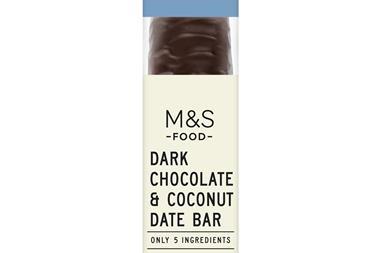

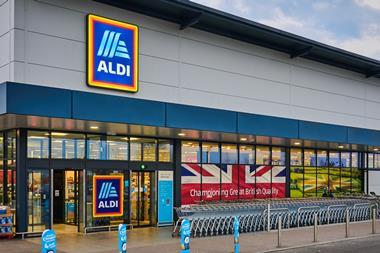


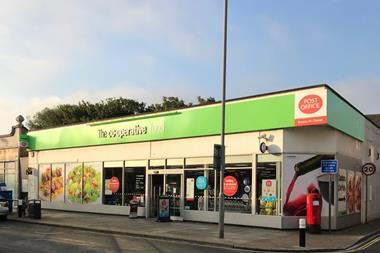
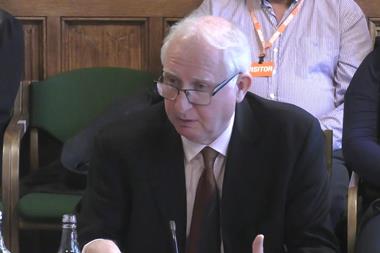
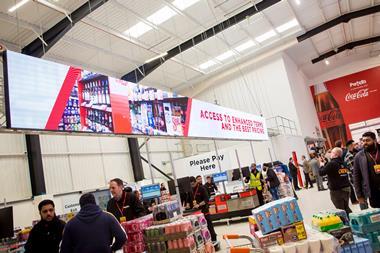
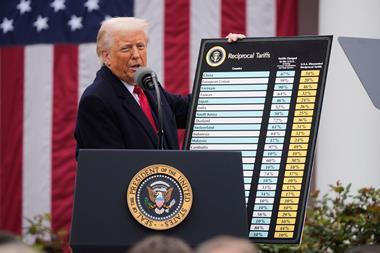
1 Readers' comment